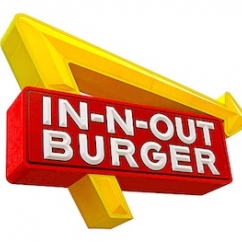Articles and News
What A Good Burger Can Tell You About Millennial Consumers January 28, 2015 (0 comments)

New York, NY—When it comes to luxury goods, the true impact of Millennial spending power is still a decade away at the earliest. The shift from Boomer to Millennial dominance in luxury spending will begin around 2018 to 2020, but the true impact won’t be felt until about 2026 at the earliest. Its peak will come yet another decade after—between 2034 and 2040.
Why, then, are luxury retailers so focused on Millennials now if their real spending power is still 10 years away? Because understanding what drives them now will ensure those retailers are properly positioned to attract them for the long term.
It’s critical to understand the Millennials’ view of luxury is not the same as the Boomer view. For Gen-Y, it’s less about price and more about personal resonance. Millennials “get” luxury brands: they are famous for their mix of high and low, and will pair a costly luxury handbag with clothes from H&M. This was true even before the Great Recession, but since then their perceptions of luxury have changed, says Maryleigh Bliss, editor-in-chief and strategic consultant for Ypulse. They'll still buy luxury brands, but there has to be a compelling reason for the price beyond snob appeal.
The recession hit this generation especially hard. As a result, this now-financially-cautious group has a much looser definition of luxury, and it doesn’t always require a high price tag. One 18-year-old told Bliss that luxury is “something you are privileged to enjoy that you may not be able to enjoy as often as other things. Like In-N-Out is a luxury compared to McDonald's because McDonald's are everywhere but In-N-Outs are not.”
Not even a mention of high-end steakhouses like Fleming’s or Capital Grille.
Luxury can mean rarity, convenience, ease of access, material sourcing—all separate ideals from expense, says Bliss. The “fine casual” dining trend exemplifies what Millennials look for in all their spending: good quality but not too high priced. They’re flocking to restaurants like In-N-Out, Shake Shack, Panera, and Chipotle, at the expense of traditional fast food outlets like Burger King or McDonalds. They prefer fresher, healthier food, and perceive these restaurants to offer it without the cost of fine dining.
Another example is the decline of Abercrombie & Fitch, once the cool place for this generation to shop. Today, the brand is struggling. Apart from its controversial sexy ads and elitist practice of hiring only über-attractive associates, analysts believe former CEO Mike Jeffries’ continued refusal to budge on price is what ultimately did the brand in. Not only did teen tastes change, but A&F clothes were steadfastly priced significantly higher than competitors. Cost-conscious customers shifted over to H&M, Forever 21, and the like.
This also is the generation that embraced the sharing economy—cars, apartments, high-end fashion, even jewelry—and that’s likely to continue and grow.
This consumer also embraces the disruptive underdog as long as the quality is better. Craft beers are flourishing at the expense of big national brands; the same is happening with almost any brand they perceive as too big, too traditional, or having too much monopoly. This is where local and artisan jewelers have particular appeal to this customer.
Of course, the spending shift won’t happen overnight, says Bliss. But brands and retailers need to start shifting their mindset now or they risk being left behind if they don’t.
As have prior generations, Millennials’ tastes may mature into categories they don’t currently buy. But the best way to ensure they do is to appeal to them now in a language they understand and show them both how and why your product is going to fit their needs.







